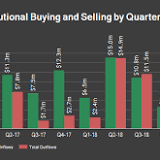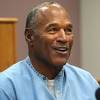Global equity markets drop as gold hits 17-month high

Wall Street and European stocks fell sharply, shares in Moscow plunged, traders piled into low-risk government debt and gold hit a 17-month high after Russian president Vladimir Putin launched a military invasion of Ukraine.
After explosions were reported near Kyiv early on Thursday morning, the benchmark S&P 500 share index fell 2.2 per cent. The technology-focused Nasdaq Composite index entered bear market territory, opening more than 3 per cent lower and 22.4 per cent below its November peak.
Europe’s regional Stoxx 600 share index was down 3.5 per cent, taking it through a technical correction — defined as a 10 per cent decline from a recent peak — with heavy falls across bourses in Germany, France, Italy and the UK.
The spot gold price rose more than 3 per cent to almost $1,974 a troy ounce — its highest since September 2020 — later trimming its gains back to 1.9 per cent.
Ahead of EU leaders meeting later on Thursday to decide on further sanctions against Russia, Brent crude oil rose as much as 9.2 per cent to $105.79, crossing the $100 threshold for the first time since 2014. European natural gas contracts surged more than 50 per cent to €124 per megawatt hour.
The escalation of the conflict in Ukraine is dominating the global market narrative because of the potential for Russia’s energy and resources being cut out of global supply chains, exacerbating already high inflation and prompting central banks to respond with rapid interest rate rises.
“A situation which seriously chokes off energy supplies from Russia will affect the world as a negative supply shock,” said Sunil Krishnan, head of multi-asset funds at Aviva Investors.
“Geopolitical tension is raising oil prices, meaning the inflation that was deemed transitory a few months ago could last even longer,” added Trevor Greetham, head of multi-asset at Royal London Asset Management.
“A big inflation impact in the US and Europe means central banks could raise interest rates further than anticipated, which brings a risk of economic stagflation.”

The US Federal Reserve was already expected to embark on a string of rate rises from next month — having pinned borrowing costs close to zero since March 2020 — in response to consumer price inflation hitting a 40-year high.
Russia’s benchmark Moex index plummeted as much as 45 per cent on Thursday, before paring back to a 36 per cent loss.
The rouble weakened to almost 90 per dollar, a record low against the US currency, later trading at Rbs86.4 against the dollar. London-listed shares of Russian steelmaker Evraz fell by about 30 per cent, and oil and gas producer Gazprom dropped by 38 per cent.
In government debt markets, the yield on the 10-year US Treasury note fell 0.1 percentage point to 1.88 per cent as the benchmark government debt instrument rose in price. German Bunds also rallied, with the yield on the 10-year security, which sets borrowing costs across the eurozone, 0.08 percentage points lower at 0.14 per cent.
Traders also moved to buy protection against riskier European companies defaulting on their debts if geopolitical tensions raise commodity prices to unmanageable levels.
The iTraxx Crossover index, which reflects the cost of hedging against such defaults, jumped more than 30 basis points to 385bp, its highest since June 2020 when companies were recovering from the initial shock of the coronavirus crisis.
Recommended
The dollar index, which tends to rise when market stress increases demand for the reserve currency, rose 1.2 per cent. The euro fell 1.4 per cent against the dollar to $1.116.
In Asia, Hong Kong’s benchmark Hang Seng index fell by more than 3 per cent.
Additional reporting by Robert Smith in London and Leo Lewis in Tokyo
Robert Armstrong dissects the most important market trends and discusses how Wall Street’s best minds respond to them. Sign up here to get the newsletter sent straight to your inbox every weekday


 Malaysia
Malaysia Argentina
Argentina  Australia
Australia  Austria
Austria  Brazil
Brazil  Canada
Canada  Germany
Germany  Ireland
Ireland  Italy
Italy  Mexico
Mexico  New Zealand
New Zealand  Poland
Poland  South Africa
South Africa  United Kingdom
United Kingdom  United States
United States 

















